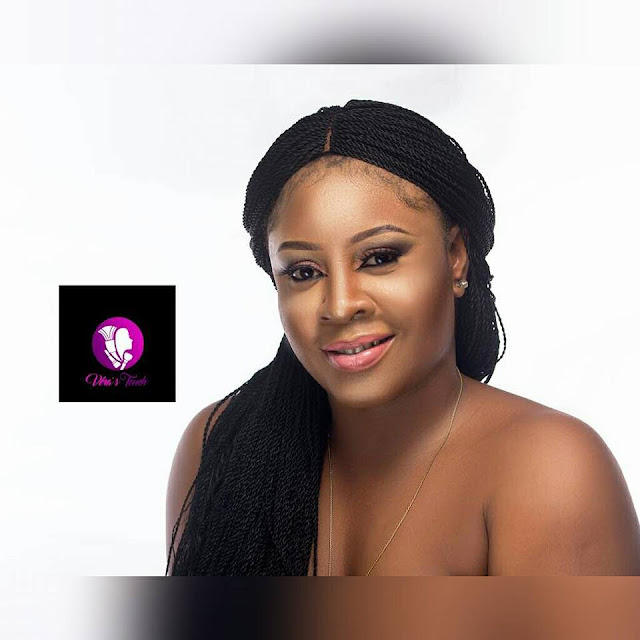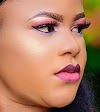Going
out tonight? For many women, this means time in front of the mirror with an
array of cosmetics. Minutes, sometimes an hour or more, and even the occasional
professional consultation may be a part of the process of enhancing
attractiveness. Within our bag of tricks, we typically find similar
products—foundation, eye shadow and liner, blush, lipstick, etc.
But
where did this particular assortment come from? Is there a psychological basis
for the makeup we use today? And if so, can we use this to our advantage?
Rather than asking "should women wear makeup?" while acknowledging
that many women do, might we instead try to figure out why we wear the makeup
we do wear?
We
talk of cosmetics as products designed to enhance physical beauty, but what is
"beautiful"? Cross-cultural research has demonstrated world-wide
variations in what is physically appealing. Such relativity roots beauty in
socialization, not evolution.
Thinness,
for example, is not a universal feature of attractiveness. This was aptly noted
by People magazine’s onetime "Most Beautiful Woman" Gwyneth Paltrow,
who said, “If we were living in ancient Rome or Greece, I would be considered
sickly and unattractive.”
Despite
cultural variation, a few physical characteristics are generally considered
universal markers of beauty. Human preferences may have evolved over millions
of years to favor certain physical characteristics linked to reproductive
fitness—youthfulness, for example, is a generally reliable cue for fertility,
potentially explaining why it’s considered attractive. Likewise, skin
homogeneity and facial similarity, both signs of good health, have wide appeal
(Fink, Grammer, & Thornhill, 2001; Thornhill & Gangestad, 1993). To a
lesser extent, other features associated with sexual arousal (plump lips, for
example) may be perceived as beautiful, because they have reliably fostered
reproduction.
Are
today’s cosmetics consistent with these ideas? Here’s what we know:
Lipstick? Wear red. Women with red lips are
in fact perceived as more attractive (Stephen & McKeegan, 2010). A recent
field experiment showed that red lipstick influenced how quickly men approached
women at a bar. In the study, women in red lipstick were approached sooner than
those who wore no lipstick, brown lipstick, or (marginally) pink lipstick
(Guéguen, 2012).
Foundation appears foundational. Perhaps
because it evens skin tone, and therefore may give a stronger impression of
health and symmetry, foundation is widely recognized as enhancing beauty. In
fact, in one study, foundation was concluded to be the product making the most
difference in female attractiveness after a group of men judged the
attractiveness of women wearing different levels of cosmetic use, from none at
all to complete makeup (Mulhern, Fieldman, Hussey, Leveque, & Pineau,
2003).
Focus on the eyes. In recent research,
women rated eye makeup as the Number One product enhancing other women’s facial
attractiveness (Mulhern et al., 2003). Eyeliner, eye shadow, and mascara may
exaggerate facial neoteny. In other words, adults are often viewed as beautiful
when they have features typical of the young, including large eyes (as well as
small noses and large lips). Such exaggerated youthfulness tends to have
greater appeal (Jones et al., 1995).
A bit of blush. Why does rouge tend to be a
staple cosmetic? Perhaps it’s because when women are most sexually viable
(during mid-cycle during ovulation) or when they are aroused, they blush more
easily. The application of artificial blush may mimic this vascularization,
providing a subtle signal of sexual interest or arousal. This is in line with
the link established by Elliott and Niesta (2008) between the color red and sex
appeal.
Makeup simply makes you look healthier.
Beyond any attractiveness measures, cosmetics may help women create certain
favorable social perceptions. Indeed, a recent experiment revealed that women
pictured wearing cosmetics were evaluated as healthier, more confident, and
even having greater earning potential than the same women wearing no makeup
(Nash, Fieldman, Hussey, Leveque, & Pineau, 2003). This suggests that
makeup has a potentially useful role in strategic self-presentation.
ALWAYS REMEMBER VERA TOUCH FOR YOUR MAKE UP 08168339434
FACEBOOK
PAGE: vera's touch makeover INSTAGRAM: vera's_ touch _makeup

















0 Comments